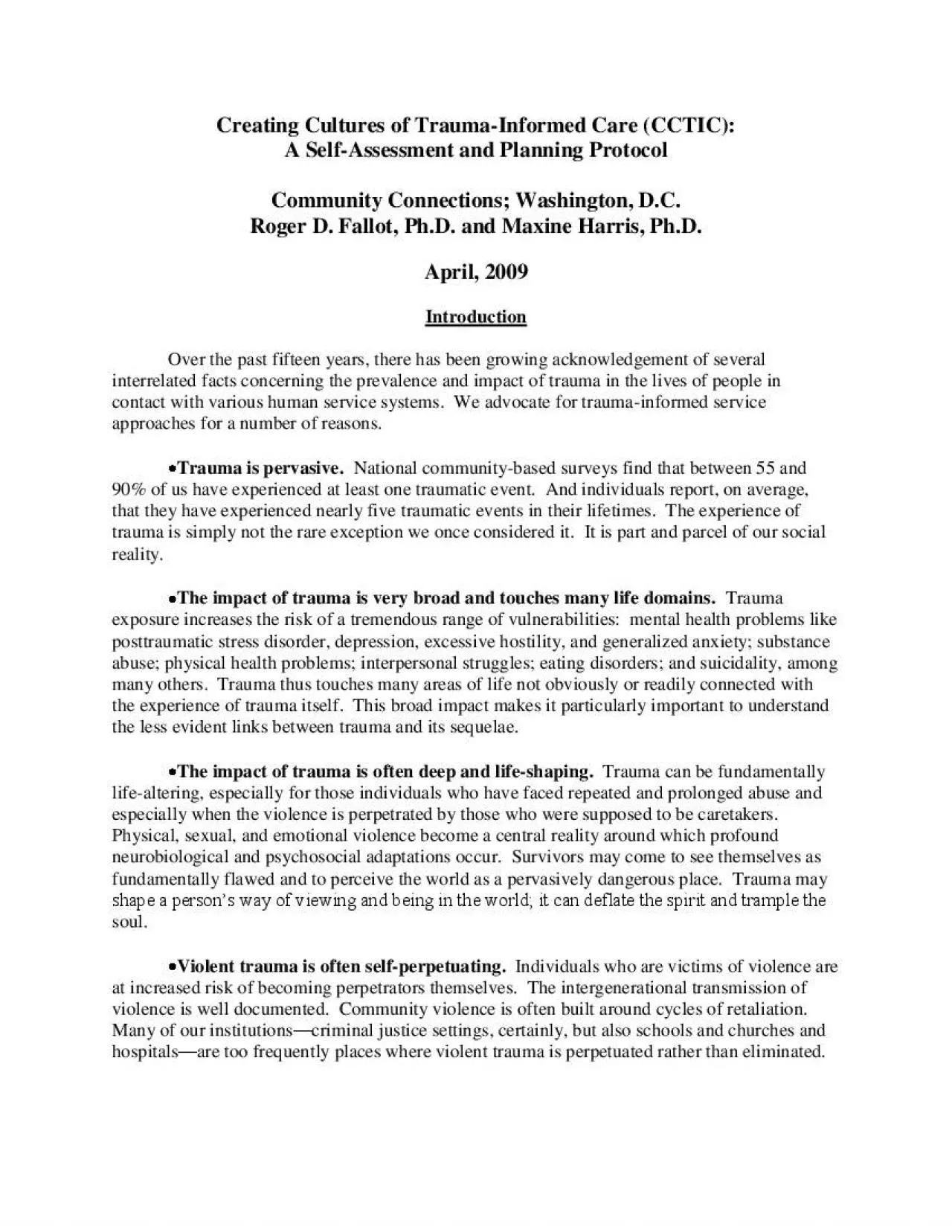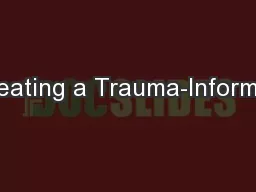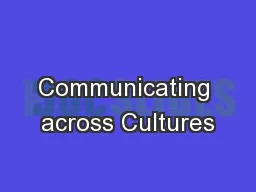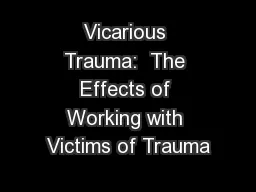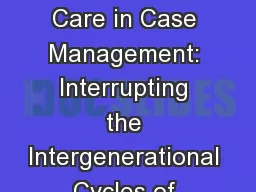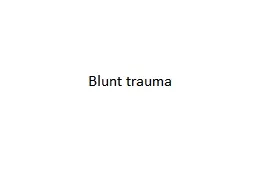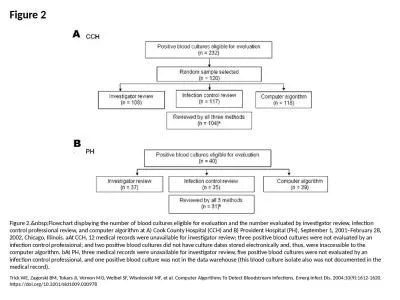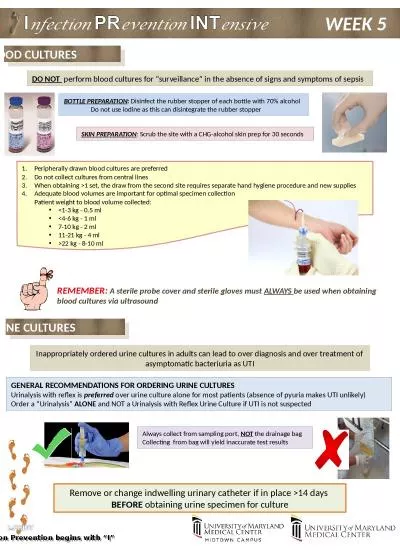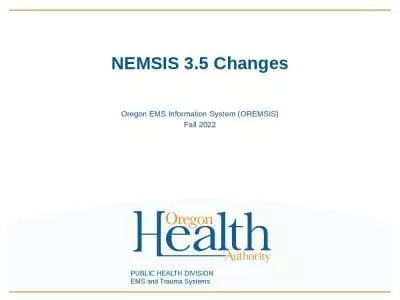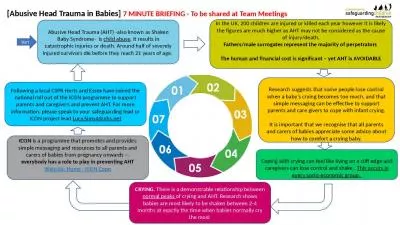PDF-Creating Cultures of Trauma
Author : teresa | Published Date : 2021-10-09
Informed CareCCTICA SelfAssessment and Planning ProtocolCommunity Connections Washington DCRoger D Fallot PhD and Maxine Harris PhDApril 2009IntroductionOver the
Presentation Embed Code
Download Presentation
Download Presentation The PPT/PDF document "Creating Cultures of Trauma" is the property of its rightful owner. Permission is granted to download and print the materials on this website for personal, non-commercial use only, and to display it on your personal computer provided you do not modify the materials and that you retain all copyright notices contained in the materials. By downloading content from our website, you accept the terms of this agreement.
Creating Cultures of Trauma: Transcript
Download Rules Of Document
"Creating Cultures of Trauma"The content belongs to its owner. You may download and print it for personal use, without modification, and keep all copyright notices. By downloading, you agree to these terms.
Related Documents

